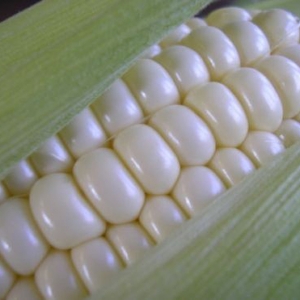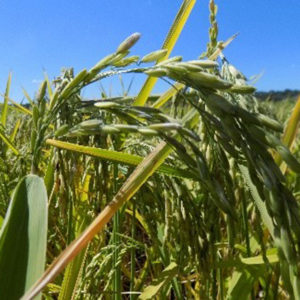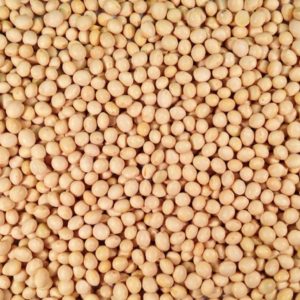PRODUCT PORTFOLIO
Providing Farmers with Certified Seed of:
Beans, Cowpeas, Groundnuts, Maize (Hybrid, OPVs and Orange Maize), Soya beans, Sorghum, Rice and Vegetables.

Beans
Known as a “nutritional powerhouse,” dry bean is a human food high in protein, phosphorus, zinc, iron, vitamin B1 and fiber. Among many other nutritional traits. It is the most important legume worldwide for human consumption. Dry bean is also a valuable cash crop. Beans is a crop that requires the farmer to provide adequate cultural management and attention and this is essential from variety selection, field selection and planting through harvest, plus marketing for maximum profitability.
Beans is adapted to a wide range of climatic conditions. Beans will grow best on well drained friable soils and light sandy loams.
| Variety | Characteristics | |
| 1. | Mbereshi | Habit type: Bush |
| Seed colour: Dark red mottled | ||
| Seed size: Large | ||
| Days to maturity: 80-85 days | ||
| Colour of physiologically mature pods: Cream | ||
| Seed rate: 60kg/ha | ||
| Spacing: 60 x 10cm | ||
| Adapted regions: III and II (under residual moisture in region I) | ||
| Yield potential: 1,500-2,000kg/ha | ||
| 2. | Chambeshi | Habit type: Bush |
| Seed colour: Khaki/Cream | ||
| Seed size: Large | ||
| Days to maturity: 80-85 days | ||
| Colour of physiologically mature pods: Cream | ||
| Seed rate: 60kg/ha | ||
| Spacing: 60 x 10cm | ||
| Adapted regions: III and II (under residual moisture in region I) | ||
| Yield potential: 1,000-1,500kg/ha | ||
| 3. | Lukupa | Habit type: Indeterminate |
| Seed colour: Cream mottled | ||
| Seed size: Medium | ||
| Days to maturity: 75-80 days | ||
| Colour of physiologically mature pods: Cream with stripes | ||
| Seed rate: 60kg/ha | ||
| Spacing: 60 x 10cm | ||
| Adapted regions: III and II (under residual moisture in region I) | ||
| Yield potential: 1,000-1,500kg/ha | ||
| 4. | Kabulangeti | Habit type: Indeterminate (semi climber) |
| Seed colour: Purple | ||
| Seed size: Medium | ||
| Days to maturity: 75-80 days | ||
| Colour of physiologically mature pods: Cream with purplish stripes | ||
| Seed rate: 60kg/ha | ||
| Spacing: 60 x 10cm | ||
| Adapted regions: III and II (under residual moisture in region I) | ||
| Yield potential: 1,500-2,000kg/ha | ||
| 5. | Luangeni | Habit type: Indeterminate bush |
| Seed colour: White | ||
| Seed size: Small | ||
| Days to maturity: 95-100 days | ||
| Colour of physiologically mature pods: Cream | ||
| Seed rate: 40kg/ha | ||
| Spacing: 60 x 10cm | ||
| Adapted regions: III and II (under residual moisture in region I) | ||
| Yield potential: 2,500-3,000kg/ha | ||
| 6. | Lyambai | Habit type: Indeterminate bush |
| Seed colour: Red mottled | ||
| Seed size: medium size, | ||
| Days to maturity: 85-90 | ||
| Colour of physiologically mature pods: Cream | ||
| Seed rate: 40kg/ha | ||
| Spacing: 60 x 10cm | ||
| Adapted regions: II and III | ||
| Yield potential: 1,500-2,000kg/ha | ||
1-ZAMBIA’S AGRO-ECOLOGICAL ZONES
Key
AER 1 = Agro-Ecological Region 1
- Less than 800mm rainfall per year.
- 80-120 effective growing days.
- Suitable for millet, sorghum, maize, groundnuts, soyabeans.
AER 2A and AER 2B = Agro-Ecological Region 2a and Agro-ecological Region 2B
- 800-1, 000mm rainfall per year.
- 100-140 effective growing days.
- Suitable for maize, sorghum, millet, cowpea, groundnuts, soyabeans.
AER 3 = Agro-Ecological Region 3
- More than 1, 000mm rainfall per year.
- 160+ effective growing days.
- Suitable for maize, millet, sorghum, groundnuts, beans, rice, soyabean
C.2-ZAMBIA’S AGRO-ECOLOGICAL ZONES

Cowpeas
Cowpea needs rainfall of between 250 – 750mm/year, sandy to heavy loam soils of about 4.2-5.0pH making it ideal for Region I.
| Variety | Characteristics | |
| 1. | Local | Type: Long maturing, prostate |
| Tolerance: Low nitrogen, drought. | ||
| Days to maturity: 130 days | ||
| Seed Colour: Pinkish | ||
| Seed rate: 12kg/ha | ||
| Spacing: 75 x 15 cm | ||
| Target regions: I, II, | ||
| Yield potential: 500kg/ha | ||
| 2. | Lutembwe | Type: Medium maturing, good leaf quality. |
| Tolerance: Low nitrogen, drought | ||
| Days to maturity: 100 days | ||
| Seed Colour: Pink | ||
| Seed rate: 12kg/ha | ||
| Spacing: 75 x 15 cm | ||
| Target regions: I, II, | ||
| Yield potential: 1,500-2,000kg/ha | ||
| 3. | Bubebe | Type: Early maturing, two crops per season possible. |
| Tolerance: Low nitrogen, drought | ||
| Days to maturity: 63-70 days | ||
| Seed rate: 12kg/ha | ||
| Spacing: 75 x 15 cm | ||
| Target regions: I, II, | ||
| Yield potential: 1,000-1,500kg/ha | ||
1-ZAMBIA’S AGRO-ECOLOGICAL ZONES
Key
AER 1 = Agro-Ecological Region 1
- Less than 800mm rainfall per year.
- 80-120 effective growing days.
- Suitable for millet, sorghum, maize, groundnuts, soyabeans.
AER 2A and AER 2B = Agro-Ecological Region 2a and Agro-ecological Region 2B
- 800-1, 000mm rainfall per year.
- 100-140 effective growing days.
- Suitable for maize, sorghum, millet, cowpea, groundnuts, soyabeans.
AER 3 = Agro-Ecological Region 3
- More than 1, 000mm rainfall per year.
- 160+ effective growing days.
- Suitable for maize, millet, sorghum, groundnuts, beans, rice, soyabean
C.2-ZAMBIA’S AGRO-ECOLOGICAL ZONES
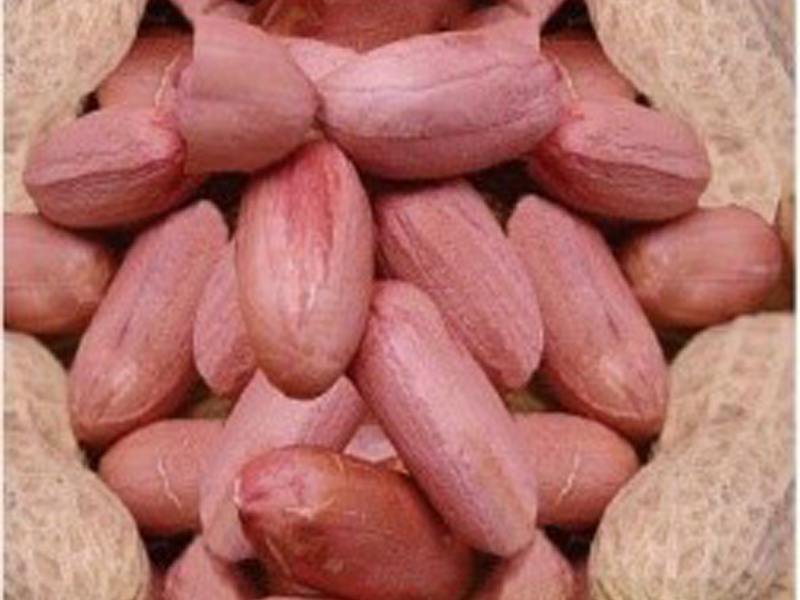
Groundnuts
Groundnuts are an important cash crop that can be grown by both commercial and small-scale farmers. As a cash crop, groundnuts fetch a good price and is an excellent crop for home consumption because of its nutritional value. It contains 25% protein and up to 50% edible oil content.
Because of its exceptional nutritional properties, groundnuts can be used in industry to produce several products such as: cooking oil, groundnut cake used in animal feed formulas, hay, etc.
| Variety | Characteristics | |
| 1. | Chishango | Habit type:Virginia |
| Seed colour: Tan | ||
| Seed size: Big | ||
| Days to maturity: 120-130 days | ||
| Seed rate: 80kg/ha | ||
| Spacing: 70 x 10cm | ||
| Adapted regions: III and II | ||
| Oil content: 48-50% | ||
| Yield potential: 2,500-3,000kg/ha | ||
| 2. | MGV 4 | Habit type:Virginia (runner type) |
| Seed colour: Red | ||
| Seed size: Medium | ||
| Days to maturity: 120-140 days | ||
| Seed rate: 80kg/ha | ||
| Spacing: 70 x 10cm | ||
| Adapted regions: III and II | ||
| Oil content: 48-50% | ||
| Yield potential: 500-1,500kg/ha | ||
| 3. | MGV 5 | Habit type:Virginia |
| Seed colour: Tan | ||
| Seed size: Big | ||
| Days to maturity: 120-130 days | ||
| Seed rate: 80kg/ha | ||
| Spacing: 70 x 10cm | ||
| Adapted regions: III and II (under residual moisture in region I) | ||
| Oil content: 48-50% | ||
| Yield potential: 2,000-2,500kg/ha | ||
| 4. | Natal common | Habit type:Spanish Valencia (erect) |
| Seed colour: Tan | ||
| Seed size: Medium | ||
| Days to maturity: 90-100 days | ||
| Seed rate: 80kg/ha | ||
| Spacing: 70 x 10cm | ||
| Adapted regions: III and II (under residual moisture in region I) | ||
| Oil content: 45-48% | ||
| Yield potential: 500-1,500kg/ha |
1-ZAMBIA’S AGRO-ECOLOGICAL ZONES
Key
AER 1 = Agro-Ecological Region 1
- Less than 800mm rainfall per year.
- 80-120 effective growing days.
- Suitable for millet, sorghum, maize, groundnuts, soyabeans.
AER 2A and AER 2B = Agro-Ecological Region 2a and Agro-ecological Region 2B
- 800-1, 000mm rainfall per year.
- 100-140 effective growing days.
- Suitable for maize, sorghum, millet, cowpea, groundnuts, soyabeans.
AER 3 = Agro-Ecological Region 3
- More than 1, 000mm rainfall per year.
- 160+ effective growing days.
- Suitable for maize, millet, sorghum, groundnuts, beans, rice, soyabean
C.2-ZAMBIA’S AGRO-ECOLOGICAL ZONES
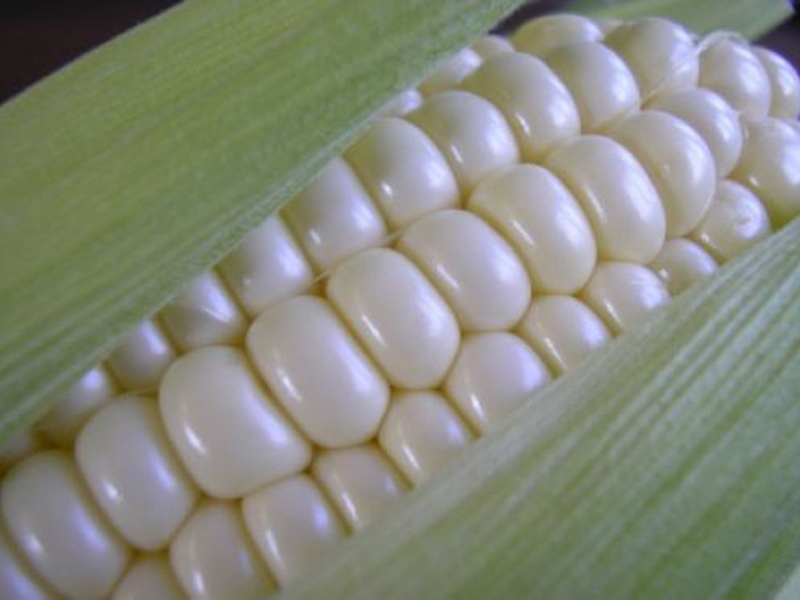
Maize (Hybrid)
Maize is grown in all the regions of Zambia but it is more suited to Regions I and II. In region III yields are low especially in fields which are not limed due to aluminum toxicity as the soils are acidic.
Being a sub-tropical plant, maize prefers hot sunny conditions with reliable and evenly distributed rainfall. Maize does well under frost free conditions and when mean daily temperatures are above 15oC. For germination, the lowest mean daily temperature is about 10oC. Maize can be grown successfully on a wide range of soils from loamy sands to clays provided there is sufficient depth (at least one meter) and the crop is properly fertilized. It does well under pH ranging between 4.7 and 6.5.
Recommended Varieties: Farmersare advised to select varieties suited to their region and also the time of planting may help decide the variety to use. The yields are determined by a number of factors among which are; time of planting, soil fertility level and general management factors.
| Variety | Characteristics | |
| 1. | GV 635 | Type: Three-way hybrid |
| Tolerance: Tolerant to MSV, drought, GLS. | ||
| Days to maturity: 125-135 days | ||
| Grain type: Semi-flint | ||
| Seed rate: 20kg/ha | ||
| Spacing: 90 x 25cm | ||
| Target regions:I, II, III | ||
| Yield potential: up to 11,000kg/ha | ||
| 2. | GV 638 | Type: Three-way hybrid |
| Tolerance: Tolerant to MSV, drought, GLS. | ||
| Days to maturity: 125-135 days | ||
| Grain type: Semi-flint | ||
| Seed rate: 20kg/ha | ||
| Spacing: 90 x 25cm | ||
| Target regions: I, II, III | ||
| Yield potential: up to 10,000kg/ha | ||
| 3. | ZM 521 | Type: Open-pollinated variety |
| Tolerance: Medium tolerance to low nitrogen, drought, GLS and blight | ||
| Days to maturity: 120-130 days | ||
| Grain type: Semi-dent | ||
| Seed rate: 20kg/ha | ||
| Spacing: 90 x 25cm | ||
| Target regions:I, II | ||
| Yield potential: 4,500-5,500kg/ha | ||
| 4. | MM 409 | Type: Open-pollinated variety, early maturing |
| Tolerance: Medium tolerance to low nitrogen, drought and GLS | ||
| Days to maturity: 90-100 days | ||
| Grain type: Flint | ||
| Seed rate: 20kg/ha | ||
| Spacing: 90 x 25cm | ||
| Target regions:I, II | ||
| Yield potential: 4,000-4,500kg/ha | ||
1-ZAMBIA’S AGRO-ECOLOGICAL ZONES
Key
AER 1 = Agro-Ecological Region 1
- Less than 800mm rainfall per year.
- 80-120 effective growing days.
- Suitable for millet, sorghum, maize, groundnuts, soyabeans.
AER 2A and AER 2B = Agro-Ecological Region 2a and Agro-ecological Region 2B
- 800-1, 000mm rainfall per year.
- 100-140 effective growing days.
- Suitable for maize, sorghum, millet, cowpea, groundnuts, soyabeans.
AER 3 = Agro-Ecological Region 3
- More than 1, 000mm rainfall per year.
- 160+ effective growing days.
- Suitable for maize, millet, sorghum, groundnuts, beans, rice, soyabean
C.2-ZAMBIA’S AGRO-ECOLOGICAL ZONES

Rice
Rice production is at present confined to sowing into suitable dambo’s which occur most extensively in the higher rainfall areas and the major river plains of the Western, Northern and Eastern provinces of Zambia. Present varieties suffer from low temperature damage and production at altitudes above 1,300 metres is not recommended.
| Variety | Characteristics | |
| 1. | Kilombero | Type: Open-pollinated variety, medium maturing, high yielding |
| Tolerance: Low temperatures during reproductive phase and submergence. | ||
| Days to maturity: 130-140 days | ||
| Seed rate: 40kg/ha | ||
| Spacing: 30 x Drilling | ||
| Target regions: I, II, III | ||
| Yield potential:2,500-3,500kg/ha | ||
| 2. | Supa MG | Type: Open-pollinated variety, medium maturing, high yielding |
| Tolerance: Low temperatures during reproductive phase and submergence. | ||
| Days to maturity: 140-160 days | ||
| Seed rate: 40kg/ha | ||
| Spacing: 30 x Drilling | ||
| Target regions: I, II, III | ||
| Yield potential:4,000-6, 000kg/ha |
1-ZAMBIA’S AGRO-ECOLOGICAL ZONES
Key
AER 1 = Agro-Ecological Region 1
- Less than 800mm rainfall per year.
- 80-120 effective growing days.
- Suitable for millet, sorghum, maize, groundnuts, soyabeans.
AER 2A and AER 2B = Agro-Ecological Region 2a and Agro-ecological Region 2B
- 800-1, 000mm rainfall per year.
- 100-140 effective growing days.
- Suitable for maize, sorghum, millet, cowpea, groundnuts, soyabeans.
AER 3 = Agro-Ecological Region 3
- More than 1, 000mm rainfall per year.
- 160+ effective growing days.
- Suitable for maize, millet, sorghum, groundnuts, beans, rice, soyabean
C.2-ZAMBIA’S AGRO-ECOLOGICAL ZONES

Sorghum
Sorghum is one of the most important cereal crops of the hotter and drier regions ofthe tropic and sub tropics, preferred crop in uncertain and erratic rainfall areas.
It is a superior grain for brewing because of its good malting capacity.
Sorghum has few disease and insect pest problems in Zambia. Birds are the main concern. Traditional varieties of sorghum require a long growing season, have low yield potential, and are tall and non-responsive to improved management. Improved sorghums, however, are high yielding, input responsive, and far more resistant to drought.
| Variety | Characteristics | |
| 1. | Kuyuma | Type: Open-pollinated variety, medium maturing |
| Tolerance: Excellent to drought and anthracnose. | ||
| Days to maturity: 100-110 | ||
| Grain colour: White | ||
| Seed rate: 12kg/ha | ||
| Spacing: 90 x 25cm | ||
| Target regions: I, II | ||
| Yield potential: 4,000-6,000kg/ha | ||
| 2. | ZMS-36R | Type: Open-pollinated variety, medium maturing |
| Tolerance: Excellent to drought and anthracnose. | ||
| Days to maturity: 100-110 | ||
| Grain colour: White | ||
| Seed rate: 12kg/ha | ||
| Spacing: 90 x 25cm | ||
| Target regions: I, II | ||
| Yield potential: 4,000-6,000kg/ha |
1-ZAMBIA’S AGRO-ECOLOGICAL ZONES
Key
AER 1 = Agro-Ecological Region 1
- Less than 800mm rainfall per year.
- 80-120 effective growing days.
- Suitable for millet, sorghum, maize, groundnuts, soyabeans.
AER 2A and AER 2B = Agro-Ecological Region 2a and Agro-ecological Region 2B
- 800-1, 000mm rainfall per year.
- 100-140 effective growing days.
- Suitable for maize, sorghum, millet, cowpea, groundnuts, soyabeans.
AER 3 = Agro-Ecological Region 3
- More than 1, 000mm rainfall per year.
- 160+ effective growing days.
- Suitable for maize, millet, sorghum, groundnuts, beans, rice, soyabean
C.2-ZAMBIA’S AGRO-ECOLOGICAL ZONES

Soyabeans
Soyabeans is one of the important food legume crops grown in Zambia by both commercial and small scale farmers. Soyabeans has the highest concentration and the most balanced quality of protein amongst food legumes crops. The soyabeans oil is also an important source of cooking oil and the cake, left after extraction, is a valuable animal feed. Soyabeans are an excellent rotational crop with cereals.
| Variety | Characteristics | |
| 1. | Lukanga | Type: Open-pollinated variety, medium maturing. |
| Tolerance: Shattering, most major diseases. | ||
| Days to maturity: 115-120 days | ||
| Grain colour: White | ||
| Seed rate: 100kg/ha | ||
| Spacing: 60 x 4cm | ||
| Target regions: I, II | ||
| Yield potential: 2,000-3,000kg/ha |
1-ZAMBIA’S AGRO-ECOLOGICAL ZONES
Key
AER 1 = Agro-Ecological Region 1
- Less than 800mm rainfall per year.
- 80-120 effective growing days.
- Suitable for millet, sorghum, maize, groundnuts, soyabeans.
AER 2A and AER 2B = Agro-Ecological Region 2a and Agro-ecological Region 2B
- 800-1, 000mm rainfall per year.
- 100-140 effective growing days.
- Suitable for maize, sorghum, millet, cowpea, groundnuts, soyabeans.
AER 3 = Agro-Ecological Region 3
- More than 1, 000mm rainfall per year.
- 160+ effective growing days.
- Suitable for maize, millet, sorghum, groundnuts, beans, rice, soyabean
C.2-ZAMBIA’S AGRO-ECOLOGICAL ZONES

Vegetable Seeds
Assorted
1-ZAMBIA’S AGRO-ECOLOGICAL ZONES
Key
AER 1 = Agro-Ecological Region 1
- Less than 800mm rainfall per year.
- 80-120 effective growing days.
- Suitable for millet, sorghum, maize, groundnuts, soyabeans.
AER 2A and AER 2B = Agro-Ecological Region 2a and Agro-ecological Region 2B
- 800-1, 000mm rainfall per year.
- 100-140 effective growing days.
- Suitable for maize, sorghum, millet, cowpea, groundnuts, soyabeans.
AER 3 = Agro-Ecological Region 3
- More than 1, 000mm rainfall per year.
- 160+ effective growing days.
- Suitable for maize, millet, sorghum, groundnuts, beans, rice, soyabean
C.2-ZAMBIA’S AGRO-ECOLOGICAL ZONES




